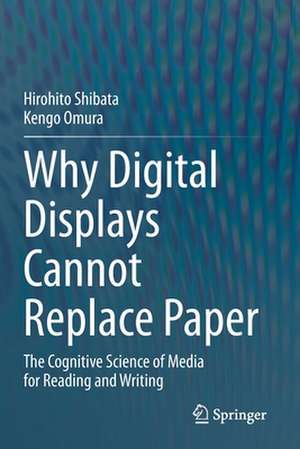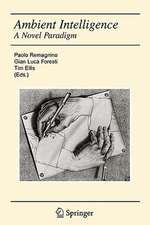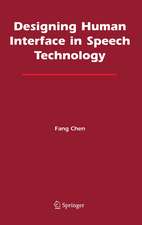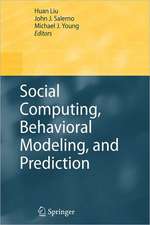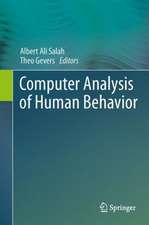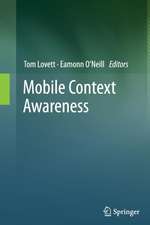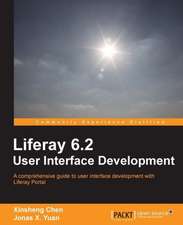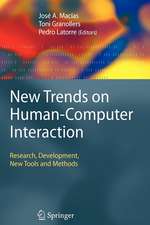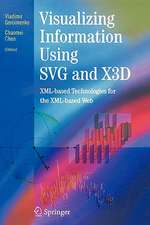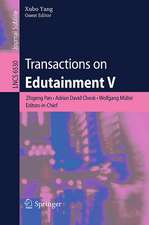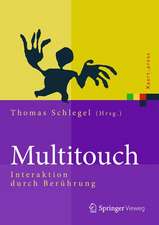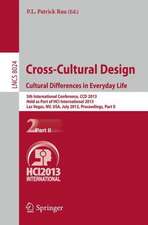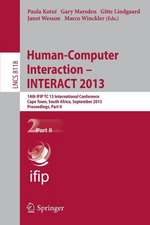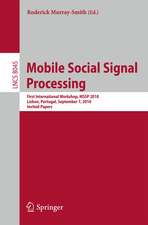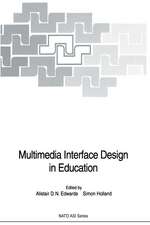Why Digital Displays Cannot Replace Paper: The Cognitive Science of Media for Reading and Writing
Autor Hirohito Shibata, Kengo Omuraen Limba Engleză Paperback – 12 noi 2021
| Toate formatele și edițiile | Preț | Express |
|---|---|---|
| Paperback (1) | 498.53 lei 43-57 zile | |
| Springer Nature Singapore – 12 noi 2021 | 498.53 lei 43-57 zile | |
| Hardback (1) | 502.83 lei 22-36 zile | |
| Springer Nature Singapore – 12 noi 2020 | 502.83 lei 22-36 zile |
Preț: 498.53 lei
Preț vechi: 623.16 lei
-20% Nou
Puncte Express: 748
Preț estimativ în valută:
95.42€ • 103.69$ • 80.21£
95.42€ • 103.69$ • 80.21£
Carte tipărită la comandă
Livrare economică 21 aprilie-05 mai
Preluare comenzi: 021 569.72.76
Specificații
ISBN-13: 9789811594786
ISBN-10: 9811594783
Pagini: 181
Ilustrații: XIX, 181 p. 68 illus., 58 illus. in color.
Dimensiuni: 155 x 235 mm
Greutate: 0.29 kg
Ediția:1st ed. 2020
Editura: Springer Nature Singapore
Colecția Springer
Locul publicării:Singapore, Singapore
ISBN-10: 9811594783
Pagini: 181
Ilustrații: XIX, 181 p. 68 illus., 58 illus. in color.
Dimensiuni: 155 x 235 mm
Greutate: 0.29 kg
Ediția:1st ed. 2020
Editura: Springer Nature Singapore
Colecția Springer
Locul publicării:Singapore, Singapore
Cuprins
Chapter 1: Reading and Writing in the Digital Age.- Chapter 2: Various Media and their Characteristics.- Chapter 3: The Ease of Reading from Paper and the Difficulty of Reading from Displays.- Chapter 4: Effects of Presentation Quality in Reading.- Chapter 5: Effects of Operability on Reading.- Chapter 6: Ease of Concentration on Reading.- Chapter 7: The Effects of Writing and Drawing by Hand.- Chapter 8: Discussion and Proposals.- Chapter 9: Conclusion.
Notă biografică
Hirohito Shibata is a professor at the Faculty of Social Information, Gunma University. He received a Master of Science degree from Osaka University in 1994 and a Doctor of Engineering degree from The University of Tokyo in 2003. He worked for Fuji Xerox Co., Ltd. as a researcher from 1994 to 2000 and then since 2003 to 2020. He was also a part-time lecturer at the Tokyo University of Technology and at Otsuma Women’s University and was a board member of the Japanese Society for Artificial Intelligence (SJAI). He is a Fellow of the Imaging Society of Japan (ISJ) and is also a vice president of the Electronic Paper Consortium, Japanese Business Machine and Information Systems Industries Association (JBMIA). His specialties are user interface design and cognitive science. He is also interested in supporting human intellectual activities using computers. The research on media introduced in this book has been conducted since 2007. At present, he is working on research to design a newdigital medium for reading and writing.Kengo Omura graduated from the doctoral program of the Department of Psychology, Graduate School of Sociology, Keio University. After joining Fuji Xerox Co., Ltd., he worked on studies of cognitive science, document design, and the development of document creation support. He is also a part-time lecturer at Kamakura Women’s University. His specialty is cognitive psychology. Books he has written include Cognitive Psychology Course 2: Memory and Attention (University of Tokyo Press, 1985) and Cognitive Psychology Important Study 2: Memory Cognition (Seishin Shobo, 1996).
Textul de pe ultima copertă
From readability to operability, this book presents a number of experiments to analyze the characteristics of paper and digital displays in reading and writing. Why is it easy to read on paper? Why is it easy to concentrate on reading on paper? Why is it easy to think while writing or drawing on paper? This book answers these questions based on cognitive experiments on media. Paper is easy to read because it is easy to handle. If we emphasize the strengths of paper, paper is an operation media rather than a presentation media. These experiments also indicate how to develop digital media for reading and writing.
This book will interest those who want to gain a scientific understanding of reading and writing on paper, those who want to work more efficiently by selectively using paper and digital tools, and those who develop digital devices or services for reading and writing.
Caracteristici
Discusses the values of paper and digital displays based on cognitive experiments Gives suggestions for future digital media for reading and writing Proposes selective use of paper and digital displays depending on the situation
